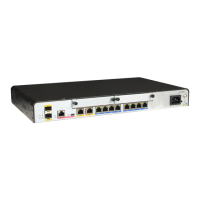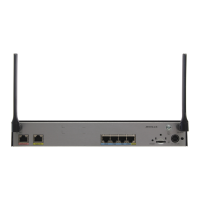Step 3 Run:
ipv4-family vpnv4
The BGP VPNv4 view is displayed.
Step 4 Run:
apply-label per-nexthop
The next-hop-based label allocation for IPv4 VPN routes is enabled on the ASBR.
CAUTION
After next-hop-based label allocation is enabled or disabled, the label allocated by the ASBR
for a route changes, which leads to packet loss.
----End
3.7.7 Configuring the Routing Protocol Between CE and PE
The routing protocol between a PE and CE can be BGP, static route, or IGP. You can choose
any of them as required in the configuration process.
Procedure
Step 1 Choose one of the preceding methods as required. For detailed configurations, see 3.4.6
Configuring a Routing Protocol Between a PE and a CE.
----End
3.7.8 Checking the Configuration
After configuring inter-AS VPN Option B, you can view information about all the BGP peer
relationships and VPNv4 routes on PEs or ASBRs.
Prerequisites
The configurations of the inter-AS VPN Option B function are complete.
Procedure
l Run the display bgp vpnv4 all peer command to check the VPN IPv4 routing table on the
PE or ASBR.
l Run the display bgp vpnv4 all routing-table command to check information about all the
BGP peers on the PE or ASBR.
l Run the display ip routing-table vpn-instance vpn-instance-name command to check the
VPN routing table on the PE.
l Run the display mpls lsp command to check information about the LSP and label on the
ASBR.
----End
Huawei AR1200 Series Enterprise Routers
Configuration Guide - VPN 3 BGP MPLS IP VPN Configuration
Issue 01 (2012-04-20) Huawei Proprietary and Confidential
Copyright © Huawei Technologies Co., Ltd.
103

